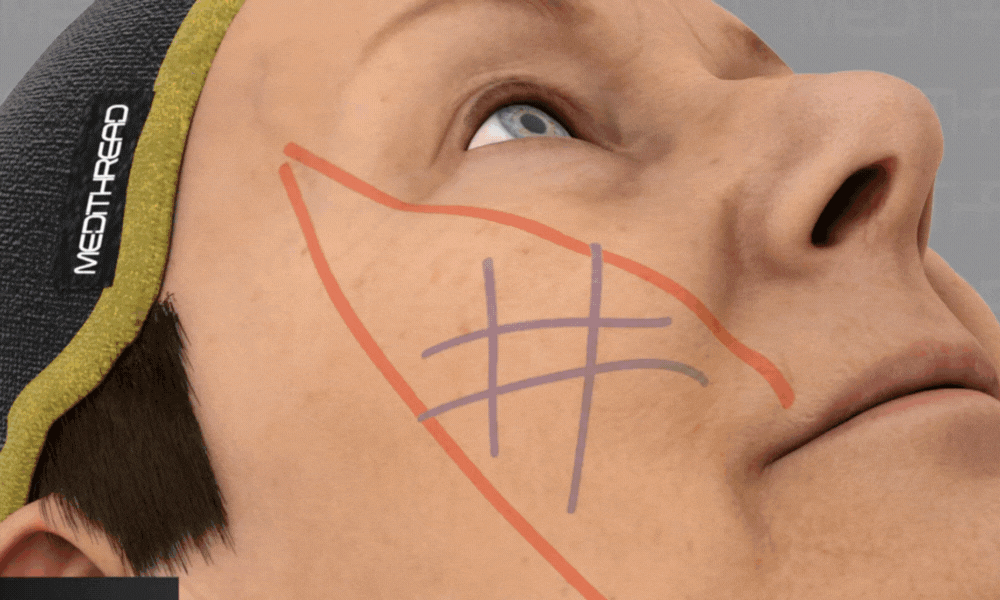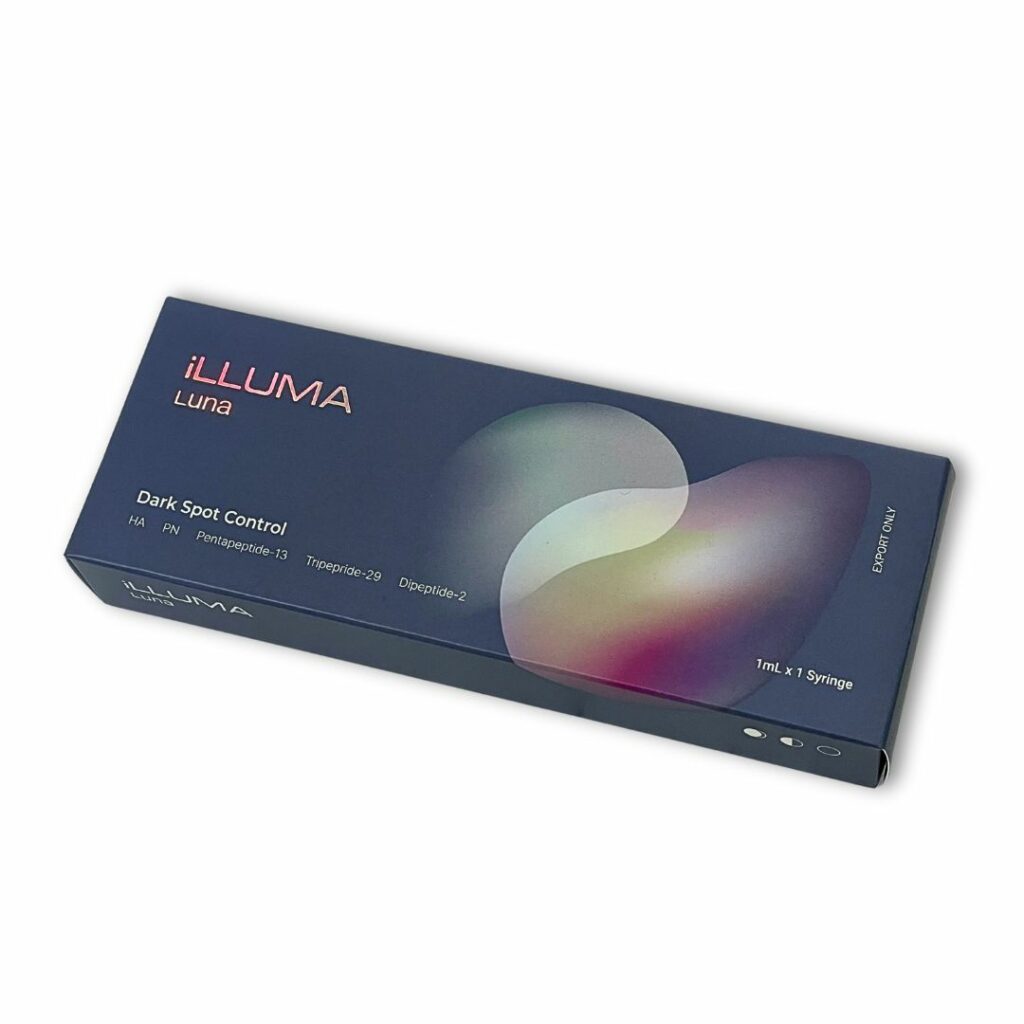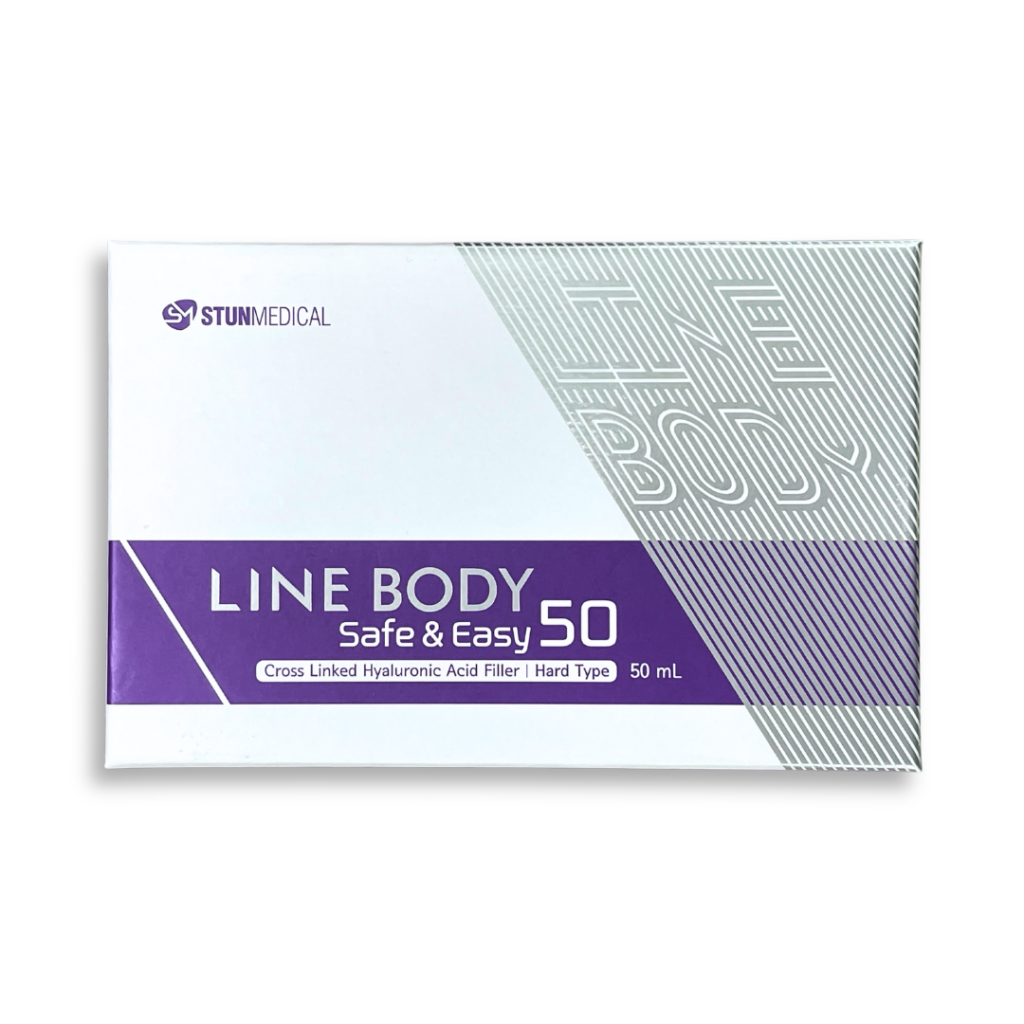Lifting with threads is a modern, minimally invasive way to correct facial and body contours. Cosmetic experts unanimously agree that thread lifting is the most effective non-surgical way to rejuvenate the skin and counteract the effects of aging.
Table of Contents
How do lifting threads work?
The threads are inserted under the skin with microscopic diameter needles, which are guided by a special cannula. The threads form an internal framework for the surrounding soft tissue. When this framework of threads is placed in the correct directions and locations, it supports and smooths the sagging tissue. This provides a powerful lifting effect and eliminates age lines and wrinkles.
Once in place, the lifting threads slowly dissolve into completely safe products that are excreted in the urine. As the thread dissolves, collagen - the main structural protein on which the smoothness and elasticity of our skin depends - has time to build up around it. After the thread disappears, a new, strong collagen framework is left in its place to take over the supporting function. Thanks to this, the result of lifting with threads is maintained for several years.


Advantages of lifting threads
Unique Lifting Method
Thread lifting is the only way to lift the face and body comparable to plastic surgery.
FDA Approval
The use of threads for rejuvenation is FDA approved.
Immediate Visible Results
Results are visible immediately after thread placement.
Non-invasive Procedure
No surgical incisions, general anesthesia, stitches or skin scarring.
Quick Procedure and Recovery
The procedure takes less than an hour, after which the patient can return to normal life.
Efficient Healing Process
Puncture sites heal quickly and without scarring.
Hypoallergenic Nature
Lifting threads do not cause allergic reactions.
Minimal Recovery Requirements
Very short recovery time that does not require hospitalization, bandages and compression garments.
What are the different types of lifting threads and which one is best for me?
Lifting threads differ in the material they are made of and in their shape.

Material type
|
PDO (Polydioxnone) |
Threads made of PDO are the most common. This is a synthetic polymer that is safe for the human body and has been used by surgeons for many years for suturing after surgery. PDO lifting threads degrade in approximately 180-210 days. |
|
PLLA (Poly-L-Lactic Acid) |
A material for thread lifting derived from plant sources. PLLA-thread biodegrade from 9 to 18 months depending on the thickness of the thread. |
|
PCL (Polycaprolacton) |
Very strong and very elastic material for thread lifting. The effect of PCL-threads builds up over time and is fully achieved in 4-5 weeks. Biodegradation of PCL-threads take up to 2 years. |
The choice of material depends on the patient's age. The older a person is, the slower their fibroblast cells produce collagen. Therefore, the more time it takes for the collagen framework to form around the lifting thread.
PDO-threads can almost always be used under the age of 40-45, PLLA-threads are often indicated between the ages of 45-55, and PCL-threads are often used over the age of 50-55.
Thread shape
The choice of thread shape depends on the severity of the deformity to be corrected.
Mono
The basic shape – one smooth and straight thread. Mono lifting threads have a regenerative and firming effect, which noticeably improves the quality of the skin. However, they almost do not provide lifting tissues. Cosmetologists recommend using monothreads in the form of a net to prevent age-related changes.





Mono Eye
For delicate lifting of the eye area, physicians recommend using a combination of monothreads and atraumatic Eye Cannula.

Twin
Two monothreads are twisted into one. Due to the increased thickness around the Twin-thread forms more collagen and the tissues are strengthened stronger. In addition, this type of threads is good at replenishing missing tissue volume. Twin-threads are recommended for early signs of aging, fine wrinkles, facial threading and small amounts of soft tissue loss.



Screw
A monothread wrapped in a spiral around the needle. It retains this shape even after insertion under the skin. This allows it to act as an "armature" to hold soft tissue in place by creating a structured framework. The Screw-threads is used for general facelifts in cases where tissue prolapse is not too pronounced.





Tornado Screw
Analog of Screw-thread, but a Twin-thread is wrapped around the needle instead of monothread. This shape is also effective for face threading and general lifting. But Tornado Screw is best used when you want to not only fixate soft tissue that has begun to fall under the influence of gravity, but also to add volume that has been lost with age.



Cog
This thread has barbs on its surface that allow it to be held firmly in the skin. Barbed threads are used to maximize effective lifting for pronounced cosmetic abnormalities. In addition, collagen is formed not only around the thread itself, but also around its barbs. This makes the collagen framework particularly strong. Cog lifting threads for face and body are recommended if you need to move soft tissues upwards and fix them securely in its new position.




How do I choose the right lifting threads?
The choice of lifting threads depends primarily on the patient's age and the cosmetic defect to be corrected. We have compiled general recommendations in the summary table below.
However, remember that only your physician or injectable cosmetologist can determine which thread is best for you.
|
Up to age 40-45 |
Age 45-55 |
Age 55 and older |
|
|---|---|---|---|
|
Forehead wrinkle prevention |
|||
|
Lifting sagging eyebrows |
|||
|
Delicate revitalization of the skin around the eyes |
|||
|
Revitalization of the skin around the mouth |
|||
|
Skin firming on cheeks and cheekbones |
|||
|
Correction and maintenance of the cheekbone line |
|||
|
Preserving the facial contour |
|||
|
Replenishment of insufficient tissue volume |
|||
|
Double chin correction |
|||
|
Facial skin and subcutaneous tissue lifting |
|||
|
Deep facial wrinkles |
|||
|
Neck skin and tissues lifting |
|||
|
Décolleté skin and tissues lifting |
|||
|
Abdominal skin and tissues lifting |
|||
|
Arm and leg skin and soft tissues lifting |












What thread thickness and length will I need?

The choice of thread thickness depends on the thickness of the skin and soft tissues in the area to be lifted. The thread thickness is indicated by a number with the letter G. The smaller is the number, the thicker is the thread. The choice of thread length depends on the size of the area to be lifted.
Here is a summary table to help you understand:
|
Thickness |
Length |
|
|---|---|---|
|
Forehead |
30G – 29G |
20mm – 40mm |
|
Around eyes and mouth, between eyebrows |
31G – 30G |
20mm – 40mm |
|
Cheeks, chin and cheekbones |
29G – 26G |
20mm – 50mm |
|
Neck |
29G – 31G |
40mm – 70mm |
|
Décolleté area |
27G – 26G |
50mm and longer |
|
Abdomen |
26G |
50mm and longer |
|
Arms and legs |
27G – 26G |
50mm and longer |
How does thread lifting work and how do I prepare for it?
Skin rejuvenation and lifting with threads can only be performed by a qualified specialist who has undergone special training and has all the necessary knowledge and practical skills.
The procedure does not require any preparation and takes 30 to 60 minutes on average.
Thread lifting is performed under local anesthesia, although in many cases this is not necessary as the technique is virtually painless.
What happens after the threads are placed?
Immediately after the procedure, the soft tissues may be slightly reddened, swollen, and tender. All of these symptoms will disappear within a few days.
Here are some tips to help improve your results:

Avoid touching the areas where the threads are placed for twenty-four hours
Protect your skin from sunlight until the redness and swelling subside
Try to limit facial expressions for the next two weeks
Try to sleep on your back for two weeks
Avoid the gym, sauna, and solarium for one month
Postpone massages and any cosmetic procedures for 2-3 weeks
When will the results appear and how long will they last?
The result will be visible right after the first treatment. Skin condition will improve, fine and medium wrinkles will disappear, deep wrinkles will become much less pronounced. Soft tissues will return to their proper places, sagging skin will be lifted, and the contours of the face will be clearly defined.
The final effect of thread lifting is achieved in 2-3 weeks (4-5 weeks if PCL-threads are used). In compliance with the recommendations of your cosmetologist and physician, the result can be maintained up to 5 years.



List of used scientific literature:
- Wong V., Rafiq N., Kalyan R., et al. Hanging by a thread: choosing the right thread for the right patient. Journal of Dermatology & Cosmetology. 2017;1(4):86-88. DOI: 10.15406/jdc.2017.01.00021
- Obourn C.A., Williams E.F. 3rd. A decade of thread-lifting-what have we learned over the last 10 years? JAMA Facial Plast Surg. 2018;20(5):349-350. doi:10.1001/jamafacial.2018.0737
- Kochhar A., Kumar P., Karimi K. Minimally invasive techniques for facial rejuvenation utilizing polydioxanone threads. Clin Plast Surg. 2023;50(3):465-477. doi:10.1016/j.cps.2022.12.011
- Adam A., Karypidis D., Ghanem A. Thread lifts: a critical analysis of treatment modalities. J Drugs Dermatol. 2020;19(4):413-417. doi:10.36849/JDD.2020.3646
Share this post on social media
Like this post
Copyright © 2024 Meamo Co. Ltd. All Rights Reserved.
No part of this publication may be reproduced, distributed, or transmitted in any form or by any means, including photocopying, recording, or other electronic or mechanical methods, without the prior written permission of the author, except in the case of brief quotations embodied in critical reviews and certain other noncommercial uses permitted by copyright law. For permission requests, write to the author, addressed “Attention: Permissions Coordinator,” at the address below.
Contact email: support@meamo.co
Related Posts

US and Korean botoxes: which one is the best?
The names Botox, Dysport, etc. are on everyone’s lips and everyone know that they are quality and safe products. But

Botox: where to and how much?
What is botulinum toxin? DISCLAIMER Botulinum toxin injections are one of the most effective ways to fight wrinkles. More than















































































